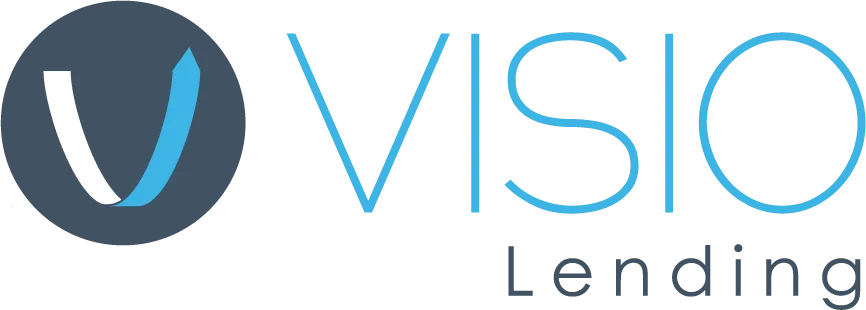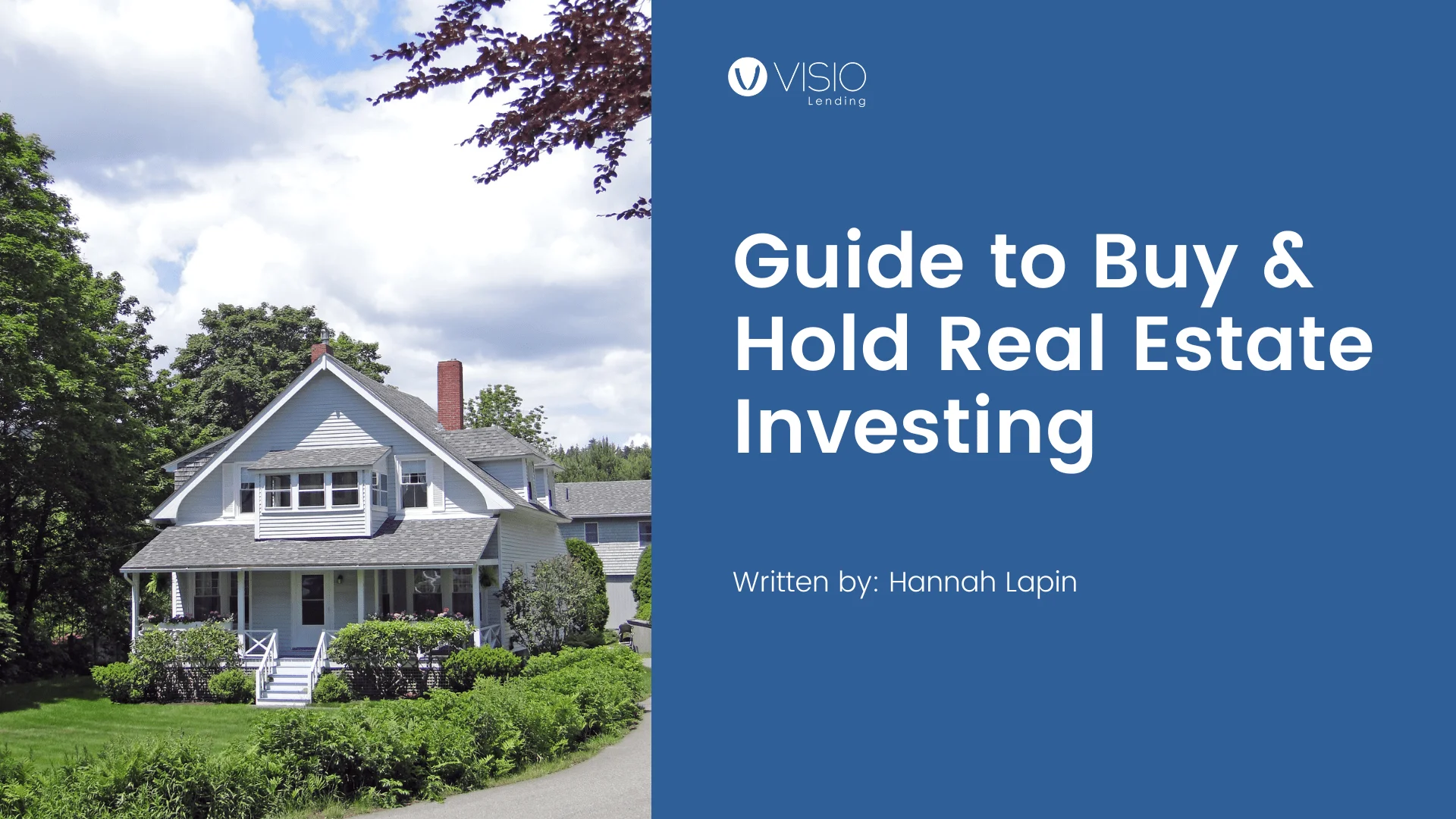There are 48 million and growing renter households in the United States, and 41% of SFR rentals are owned by individuals (Source: NAR). The demand for rental homes as well as the appeal to own and operate one is apparent. In this guide, we are going to take a look at what the buy and hold real estate strategy entails, how to determine if it is the right strategy for you, and how to get started.
What is the buy and hold real estate strategy?
Simply put, buy and hold real estate investing is a long term investment strategy where you purchase a property to hold onto and rent it out. Buy and hold investors are focused on building long term wealth over time and gaining stable monthly cash flow.
Appreciation over time often is a key part of this strategy, as many investors sell their properties years later for a much larger amount than the purchase price. Others will pull cash from their rentals to build a large portfolio of properties.
Within buy and hold investing, there are a few different categories that include long-term rentals and short-term rentals, as well as permanent rentals and transitional rentals.
Long-Term vs. Short-Term Rentals
Short-term rentals, or vacation rentals, are buy and hold properties with shorter leases, while long-term rentals are buy and hold properties with stable tenants. Both can be profitable options and each have their pros and cons. Some of the benefits of long-term rentals include consistent income, less turnover, and tenant-paid utilities. On the other hand, vacation rentals can provide a much higher rent potential but have more expenses such as frequent cleanings and higher marketing and management costs.
The strategy that is best for you comes down to personal preference and could be dependent on the geographic area. For instance, beach towns such as Gulf Shores, Alabama or Panama City, Florida are hot markets for short-term rentals and have vacation rental-friendly city regulations. Whereas cities such as Dallas, Texas or Boise, Idaho are more long-term rental-friendly.
Permanent vs. Transitional Rental
A permanent rental is the rental property investors plan to hold on to long-term, maybe even pass down to their children. Permanent rental investors are interested in the lifetime costs of the loan and are playing the long game in building wealth. Conversely, a transitional rental is the rental property investors want the flexibility to sell in the foreseeable future, often determined by market conditions.
Either strategy works with both long-term and short-term rentals, and both are viable strategies that are a matter of investor preference. Long term rental properties offer stability for an extended period, while vacation rentals offer less continuous cash flow.
Buy and hold vs. fix & flip
HGTV fans know how popular fix and flipping has become. In this strategy, investors look to generate current income by purchasing a home, improving it, and selling it at a reasonable margin over the cost of their purchase price and improvements. For example, they could buy a house with a lot of wear and tear for a good price, let’s say $100,000. Then they put $30,000 into fixing it up and turn it around for $170,000 net of transaction fees. At closing, they are pocketing $40,000, or approximately 30% of their invested capital.
Not only is fix and flipping a dissimilar approach to building wealth in real estate, it’s also financed differently than buy and hold. Fix and flip properties are usually financed with short-term construction loans, such as hard money loans, which are often refinanced after construction is complete. On the other hand, buy and hold investors are able to obtain long-term financing.
Should I buy & hold real estate?
Buy and hold real estate investing is seen as less risky than fix and flip investing, and can be a great way to build wealth and stable income over time. Before diving in headfirst, however, there are some things to take into consideration, including your finances and possible benefits and drawbacks.
Are your finances in order?
Although the ultimate goal is to have stable monthly cash flow, getting started in buy and hold investing will require some upfront cash. When purchasing a new property, you need to be prepared to cover the:
- Down Payment: Best case scenario rental lenders will offer 80% LTV (loan-to-value ratio). We recommend having at least 25% of the property value in cash.
- Closing Costs: This includes a wide range of expenses including loan fees (origination and underwriting), appraisal fees, and attorney and title fees.
- Home Inspection: This typically costs upwards of $500.
- Insurance: Landlord insurance is different and more expensive than standard homeowner’s insurance.
- Property Taxes: These vary based on the area, but every homeowner must pay them.
We also suggest setting aside some funds for expenses you could unexpectedly incur such as:
- Maintenance and Repairs: You might need a plumber, electrician, or other services.
- Vacancy: Are you prepared to cover the cost of your mortgage for a period without tenants?
Further, before you start generating rental income, there are some funds needed to get your rental property up and running such as:
- Property management company: Have money set aside for property management fees if you want to work with a property management company
- Marketing and advertising: You might want to work with a real estate agent to help you find renters
- Tenant screening: This is crucial to ensure the success of your rental business
Benefits & drawbacks of buy & hold investing
Once you have determined if you are financially able to obtain a buy and hold proeprty, it is important to evaluate this investment strategy from various angles.
Some of the benefits of buy and hold real estate investing include:
- Appreciation: Well-located investment properties tend to increase in value over time.
- Stable monthly cash flow: Receive monthly rental income.
- Several Tax Benefits: Deduct your interest rate, utilities, operating expenses, maintenance and repairs, and more.
Some of the drawbacks of investing in buy hold real estate include:
- Tenant turnover and vacancy: Screening tenants thoroughly and planning for vacancies can be a grueling process.
- Time-consuming: Being a landlord can be a full-time job, although you can always hire a property manager to offload some of the work.
- Liability: Proper landlord insurance is of the utmost importance.
How to invest in a buy and hold property strategy
Pick a good location
Often, landlords choose to invest in their hometowns because it is convenient and they better understand the real estate market. If you are looking at other real estate markets, be sure to evaluate rental demand, crime rates, school districts, job markets, and vacancies.
For help deciding where to invest, check out our guide for finding properties.
Determine your cash flow
When evaluating a rental property, it is important to make sure that the revenue potential exceeds the monthly expenses, including taxes, insurance, principal, and interest. Planning this in advance will allow you to be better prepared if any unexpected costs come up, as well as providing a guideline for how much you will have to charge for rent for the investment to make sound financial sense.
Finance your buy and hold property
We have an in-depth guide to financing a rental property, but there are essentially three options for you:
- An alternative lender, such as Visio Lending: Alternative lenders usually underwrite their loans based on rental property cash flow rather than your personal income and are used to working with real estate investor.
- Government loans or Agency loans (Fannie and Freddie): Agency loans are federally backed mortgages with great rates yet stringent requirements.
- Local banks: Many investors finance their rentals with local banks, yet there is often uncertainty and exposure limits.
Consult your advisors to determine which option is the best for you.
Buy and hold real estate FAQ
How do I build an investment portfolio?
Real estate investors can work with a DSCR lender to acquire multiple properties. You can either purchase buy and hold real estate directly or use a cash out refinance to tap into the equity of an existing rental property.
Can I change my real estate investment strategy after I purchase an investment property?
Changing course of action is very common. Often real estate investors will purchase a fix and flip property and then decide to hold it as a rental. Frequently investors own a primary residence that they ultimately keep as a rental property.
Can I use the buy and hold real estate strategy to build a stream of passive income?
Though buying rental property is often seen as a way to build passive income, buy and hold real estate investing in reality is a lot of work. A good way to more passively buy and hold property is to work with a property management company. Keep in mind that a portion of your rental income will go toward management fees.
How does buy and hold investing compare to other investment assets?
In general, it is always a good idea to diversify your investment assets. Consult your real estate attorney or counsel for personalized advice.
What down payment do I need for a buy and hold property?
As a rule of thumb, buy and hold properties require a larger down payment than your primary residence. Be prepared to put at least 25% of the property value down.
Involved but worthwhile
There are a number of ways to invest in real estate. Yes, you can try your hand at fixing and flipping homes. You can buy shares in publicly traded home builders, mortgage companies, brokerage companies, or title companies. If you’re interested in the trend towards rental properties, you can invest in one or more of the publicly traded rental REITs.
But, if you’re looking for a way to build wealth and dependable monthly cash flow over time, then owning rental properties may be for you. Most people that own rental properties want the peace of mind that they own a physical asset, that doesn’t fluctuate too much in market value, that provides others a necessity (shelter), and can generate steady cash flow. In a volatile market, owning real estate provides stability. Rental properties are an attractive alternative.






